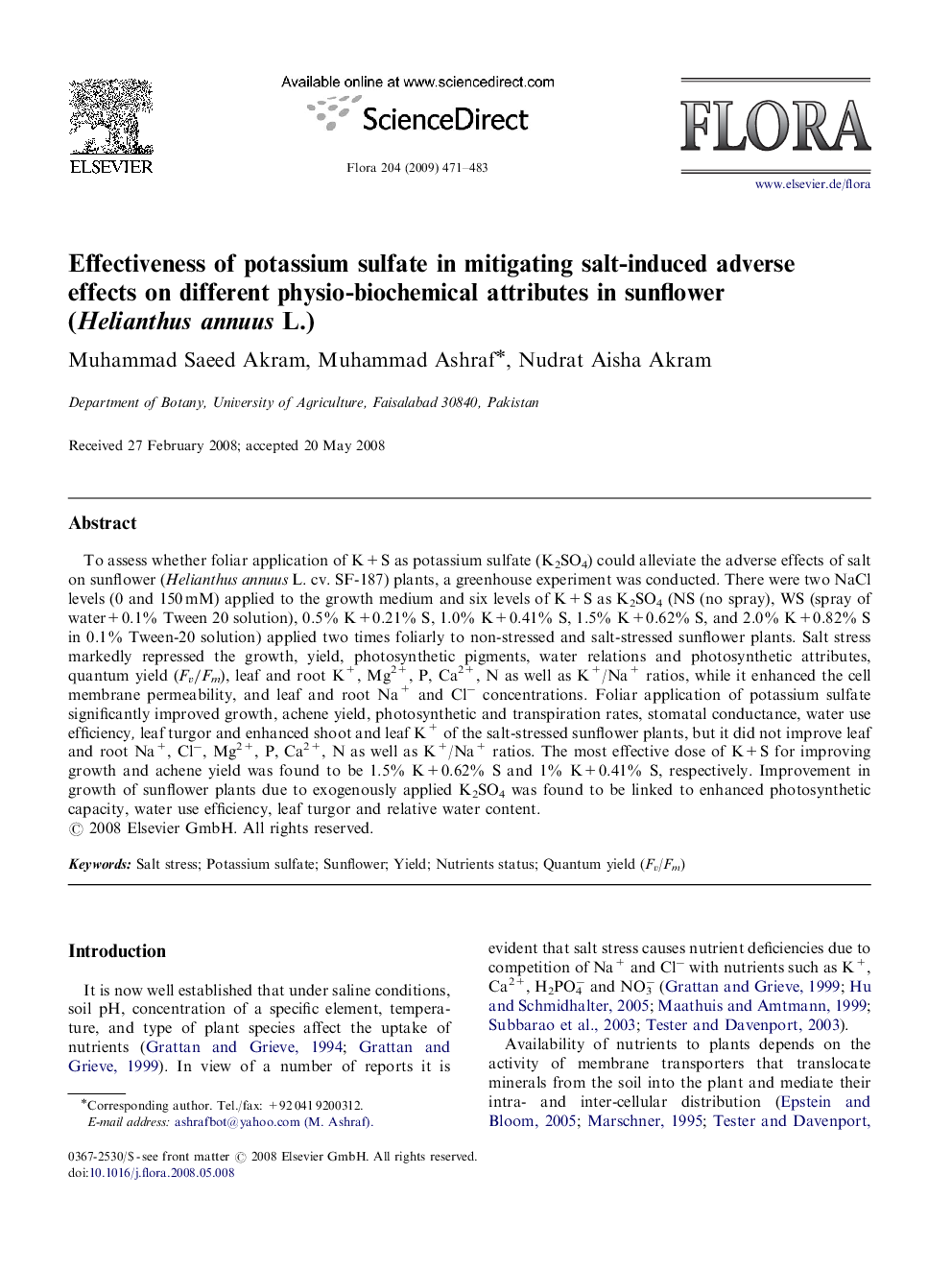| Article ID | Journal | Published Year | Pages | File Type |
|---|---|---|---|---|
| 2180271 | Flora - Morphology, Distribution, Functional Ecology of Plants | 2009 | 13 Pages |
To assess whether foliar application of K+S as potassium sulfate (K2SO4) could alleviate the adverse effects of salt on sunflower (Helianthus annuus L. cv. SF-187) plants, a greenhouse experiment was conducted. There were two NaCl levels (0 and 150 mM) applied to the growth medium and six levels of K+S as K2SO4 (NS (no spray), WS (spray of water+0.1% Tween 20 solution), 0.5% K+0.21% S, 1.0% K+0.41% S, 1.5% K+0.62% S, and 2.0% K+0.82% S in 0.1% Tween-20 solution) applied two times foliarly to non-stressed and salt-stressed sunflower plants. Salt stress markedly repressed the growth, yield, photosynthetic pigments, water relations and photosynthetic attributes, quantum yield (Fv/Fm), leaf and root K+, Mg2+, P, Ca2+, N as well as K+/Na+ ratios, while it enhanced the cell membrane permeability, and leaf and root Na+ and Cl− concentrations. Foliar application of potassium sulfate significantly improved growth, achene yield, photosynthetic and transpiration rates, stomatal conductance, water use efficiency, leaf turgor and enhanced shoot and leaf K+ of the salt-stressed sunflower plants, but it did not improve leaf and root Na+, Cl−, Mg2+, P, Ca2+, N as well as K+/Na+ ratios. The most effective dose of K+S for improving growth and achene yield was found to be 1.5% K+0.62% S and 1% K+0.41% S, respectively. Improvement in growth of sunflower plants due to exogenously applied K2SO4 was found to be linked to enhanced photosynthetic capacity, water use efficiency, leaf turgor and relative water content.
